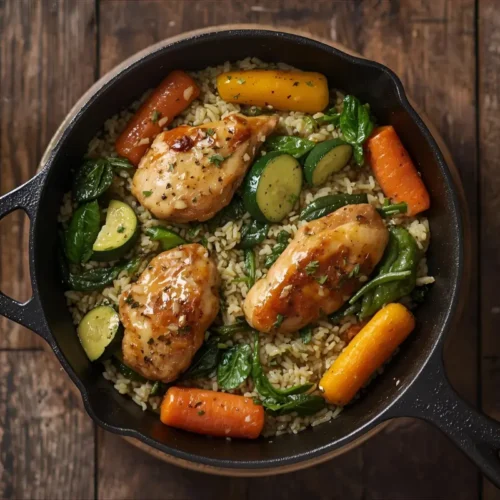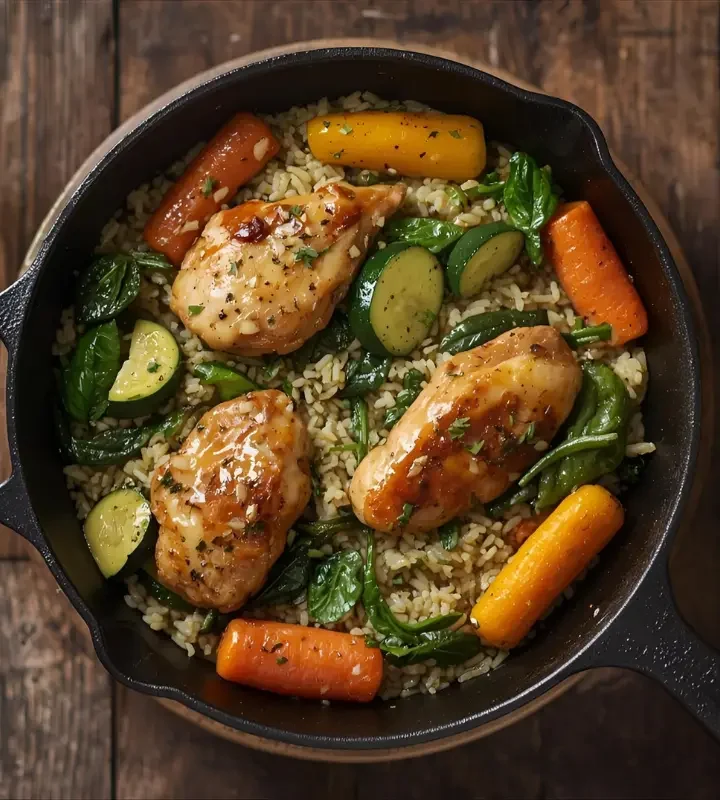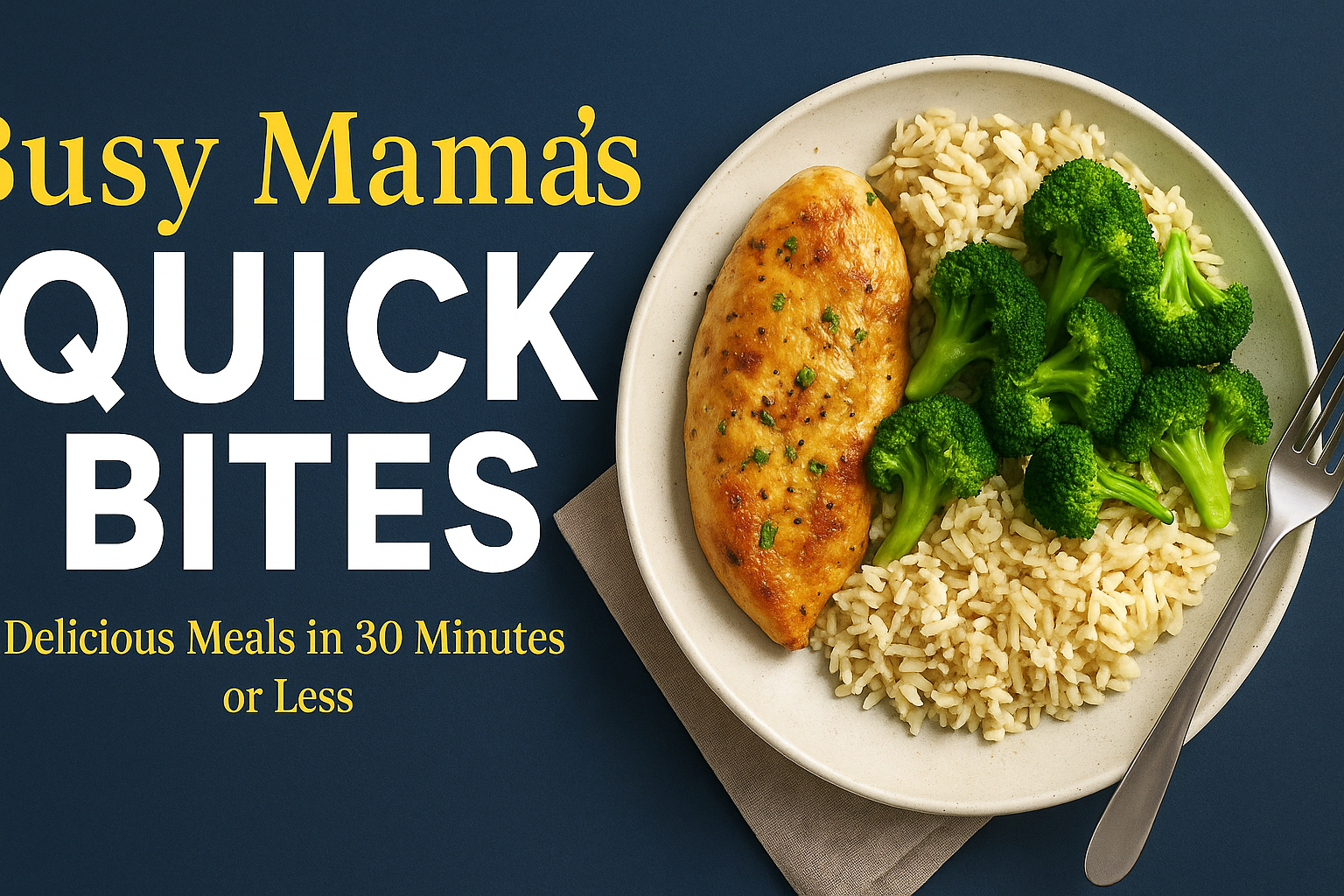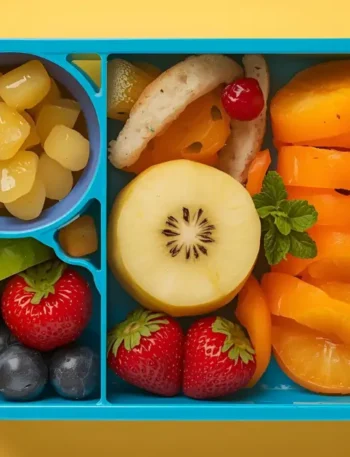
Healthy Family Meals on a Budget – 7-Day Plan
Ingredients
2 cups lentils (dry or canned)
2 cups seasonal vegetables (carrots, zucchini, spinach, etc.)
1 cup brown rice or whole-grain pasta
1 lb chicken thighs (or tofu for vegetarian option)
1 can beans (black beans, kidney beans, or chickpeas)
4 eggs
1 can tuna (in water)
2 tbsp olive oil
1 onion, diced
2 cloves garlic, minced
1 tsp cumin
1 tsp paprika
Salt and pepper to taste
Instructions
Prepare a weekly base: cook lentils, rice, and beans in bulk for easy mix-and-match meals.
For Day 1: Make lentil & vegetable soup by simmering lentils, vegetables, onion, garlic, and spices for 25 minutes.
For Day 2: Cook chicken thighs with rice and seasonal greens in one pot for a hearty skillet meal.
For Day 3: Stir-fry tofu with noodles, garlic, and mixed vegetables for a quick dinner.
For Day 4: Mix tuna with beans, olive oil, and spices; serve in wraps or over salad.
For Day 5: Make a one-pot chili with beans, ground turkey (or extra beans), onion, and spices.
For Day 6: Bake a frittata with eggs, potatoes, and spinach.
For Day 7: Use leftovers creatively—wraps, bowls, or soups.
Notes
Rising food prices make it harder than ever for families to balance nutrition, taste, and affordability. Most advice online stops at “buy in bulk” or “cook at home,” but families need more than generic tips—they need systems, strategies, and recipes that actually work in real life. This guide goes beyond the basics to give you cost-transparent, nutrition-focused, and family-friendly solutions that save money without sacrificing health.
What “Budget-Healthy” Really Means
Cost per Serving and Nutrition Transparency
- Every recipe should be measured in cost per serving and cost per 100 kcal.
- Include macronutrient breakdowns (protein, carbs, fats) and highlight key micronutrients like iron, calcium, and omega-3.
Time and Energy Efficiency
- Budget isn’t just about groceries—it’s also about time and energy bills.
- Cooking with a pressure cooker or air fryer can cut energy use by up to 70% compared to an oven.
Smart Shopping Systems for Real Savings
Unit Price Mastery
- Always compare cost per gram or liter, not sticker price.
- Use a simple worksheet or app to track best-value staples.
Seasonal and Local Swaps
- Build meals around monthly produce calendars.
- Example: Swap zucchini for cabbage in winter, or apples for bananas when prices spike.
Emergency Pantry Kits
- Stock a 3-day backup kit with canned beans, lentils, oats, frozen vegetables, and shelf-stable milk for weeks when money or time runs short.
Cooking Strategies That Cut Costs and Boost Flavor
Batch Cooking and One-Pot Meals
- A 2-hour weekend prep can yield 10 dinners with mix-and-match bases.
- One-pot meals reduce cleanup and energy use.
Flavor on a Budget
- Use bloomed spices, citrus, and vinegar to elevate cheap staples.
- Browning onions or toasting grains adds depth without extra cost.
Energy-Saving Methods
- Air fryer vs. oven: up to 50% less energy.
- Pressure cooker vs. stovetop: cuts cooking time by 60–70%.
Family Scenario Adaptations
Toddlers and Young Kids
- Puree or mash family meals instead of cooking separate dishes.
- Sneak vegetables into sauces and soups.
Teens and Athletes
- Focus on high-protein, high-calorie but affordable staples like eggs, lentils, and peanut butter.
Dietary Inclusivity
- Vegetarian: Rotate lentils, beans, and tofu.
- Gluten-free: Use rice, cornmeal, and potatoes instead of costly specialty products.
- Halal/Kosher: Highlight affordable compliant proteins like chicken thighs and canned fish.
Zero-Waste Meal Planning
Leftover-to-Next-Meal Matrix
- Roast chicken → chicken wraps → chicken soup.
- Lentil stew → lentil tacos → lentil salad.
Storage and Safety
- Cooked rice: 3–4 days in fridge.
- Soups and stews: freeze up to 3 months.
- Label and date everything to avoid waste.
The 7-Day Budget-Healthy Meal Plan (Example)
Each day includes cost per serving, macros, and prep time.
- Day 1: Lentil & vegetable soup + whole-grain bread (Cost: $1.20/serving)
- Day 2: Chicken & rice skillet with seasonal greens ($1.80/serving)
- Day 3: Veggie stir-fry with tofu and noodles ($1.50/serving)
- Day 4: Tuna & bean salad wraps ($1.40/serving)
- Day 5: One-pot chili with beans and ground turkey ($1.70/serving)
- Day 6: Egg frittata with potatoes and spinach ($1.10/serving)
- Day 7: Leftover remix night (use-up bowls, wraps, or soups)
Tools and Downloads
- Interactive Meal Planner: Auto-adjusts for budget, time, and dietary needs.
- Protein Cost Table: Compare cost per gram of protein across staples.
- Waste Tracker: Helps families cut food waste by up to 30%.
Home-Cooked vs. Takeout: The True Savings
| Meal Type | Average Cost per Serving | Calories | Protein | Notes |
|---|---|---|---|---|
| Home-cooked chili | $1.70 | 450 | 28g | Batch-cooked, freezer-friendly |
| Fast-food burger meal | $7.50 | 900 | 22g | Higher fat, lower fiber |
Result: A family of four saves over $120 per week by cooking at home.
Creative Ways to Make It Stick
- Infographics: Energy-use comparisons (oven vs. air fryer).
- Case Studies: Real families with different constraints (time-poor, picky eaters, cash-tight).
- Leftover Flowchart: Visual guide for turning last night’s dinner into tomorrow’s lunch.
- Short Videos: 60-second clips on flavor hacks and batch-prep.
- Community Tips Section: Readers share local price hacks and substitutions.
Final Thoughts
Eating healthy on a budget isn’t about sacrifice—it’s about strategy, creativity, and systems. By combining cost transparency, energy-efficient cooking, zero-waste planning, and adaptable recipes, families can eat well, save money, and reduce stress at the same time.
👉 Would you like me to also draft a sample infographic script (like the “Leftover-to-Next-Meal Matrix” or “Protein Cost Comparison”) so you can visualize how to present this content more interactively?





